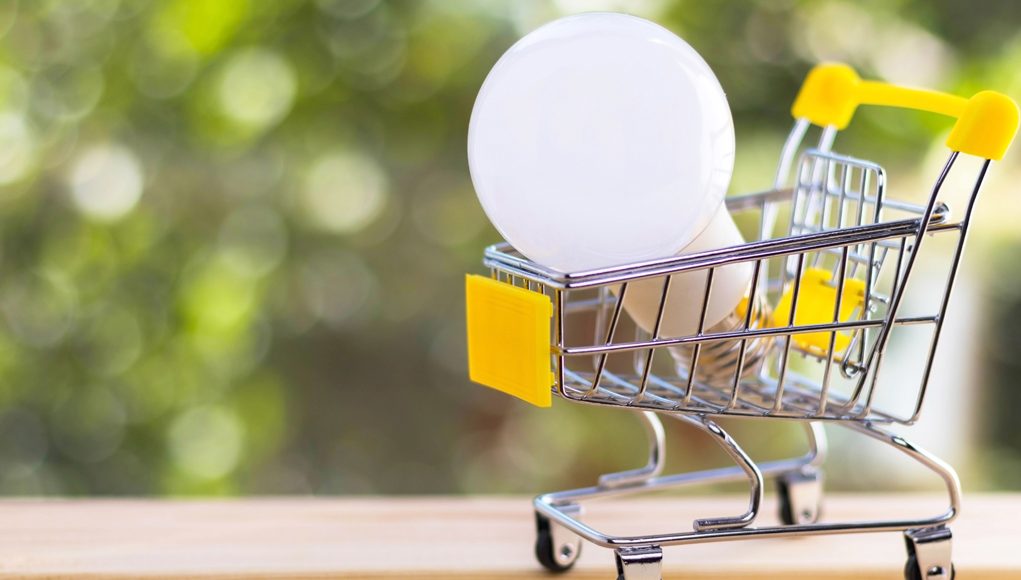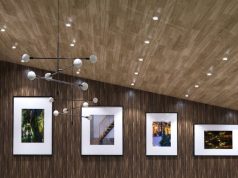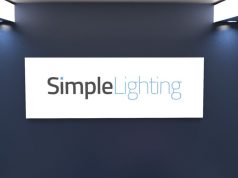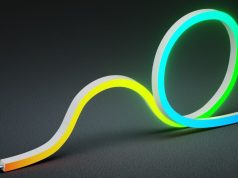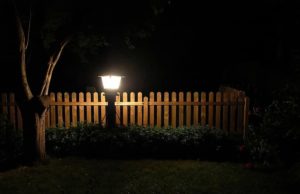What type of lights have you been using at home? Do you have incandescent ceiling lights? Are you still using halogen bulbs? It’s unfortunate if your answer is yes to any of these questions. Why? Because you’re getting more setbacks than benefits. Incandescent and halogen bulbs have more cons than pros. So, if you still have them in your home, it’s more likely that you’re not getting what you actually need, but you’re paying more for something insufficient. So, to stop this injustice, you need to switch to LED lights.
What is an LED?
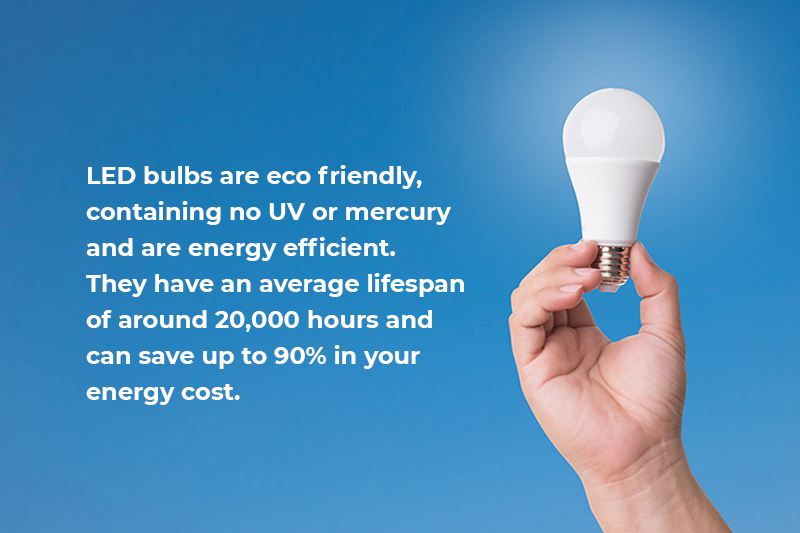
LED stands for light-emitting diode and is a modern solution for artificial lighting. These lights continue to gain popularity because of their incredible features. LED lights have toppled down halogen and incandescent bulbs because of their better light quality and excellent benefits. If you’re conscious about using products that are harmful to the environment, then you really need to get LED lights. They do not contain any mercury or produce UV, making them eco-friendly. Aside from that, they are energy efficient, which can help you save up to 90% on your energy cost. Plus, it has an average lifespan of at least 20,000 hours, meaning that you won’t be worrying about changing bulbs for years. So, why don’t you start looking around your home and see which can switch to LED lights?
How important is the Base?
When talking about bulbs, we picture a round top and a screw bottom. What you have in mind is called the Edison bulb, which is named after its inventor Thomas Edison. But, did you know there are a lot of different fittings that you can get? Most people just look at the wattage and lumens when buying bulbs, but they forget the most important thing, the base. How can you make your LED lights work if they do not fit the bulb socket? To help you with this, we made a list of the most common household bulbs you are probably using.
Common Household Bulbs:
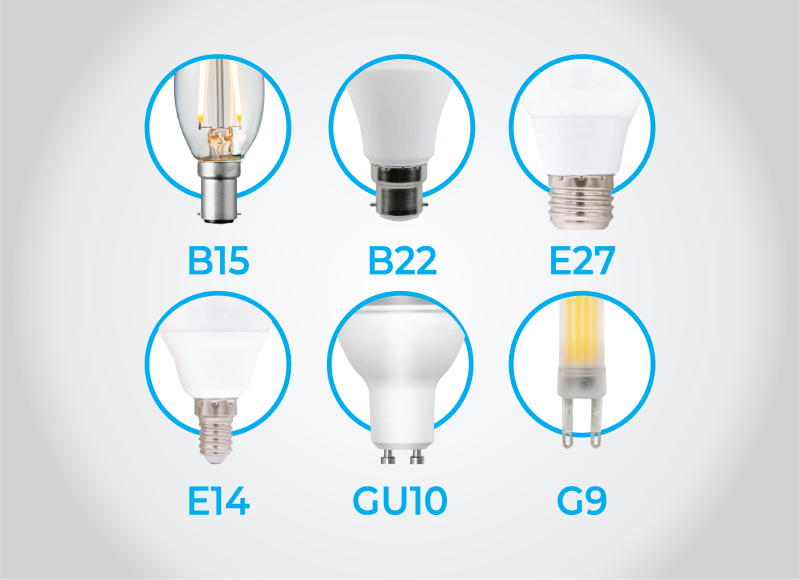
- B15 – They are also called Small Bayonet Cap and are commonly used for mains voltage lamps. They have a base diameter of 15mm and can also be found in low voltage LED lights.
- B22 – They are also called Bayonet Cap and are used for most regular light bulbs. It’s the bigger and more common version of the B15 with its 22mm diameter.
- E14 – They are also known as Small Edison Screw and are usually used for small decorative fittings. It has a 14mm diameter and is mainly seen in chandeliers and appliance light bulbs. These bulbs are predominantly used in the UK and Europe.
- E27 – This is the most popular Edison Screw variation and is used worldwide in various applications. It has a diameter of 27mm and is primarily used in the UK and Europe. Do not confuse this with the E26 bulb that is commonly used in the US.
- GU10 – This type of base has two pins that twist and lock the bulb into the fitting. GU10 LED bulbs are primarily used in the UK. They are mains powered 240V, which was first made for halogens but now used for LEDs.
- G9 – This base is designed explicitly for 240V capsule light bulbs. To measure this light bulb, you need to determine the distance between the centre points of the pins. The distance of this bulb is 9mm.
Is the LED bulb shape significant?
LED lights have different shapes and sizes. Like how bases are essential, the shapes also play a significant role in your lighting set-up. They control the angle and spread of the lights. So, to help you decide on your lights, here are some of the most common bulb shapes you can find.
Basic LED Bulb Shapes:
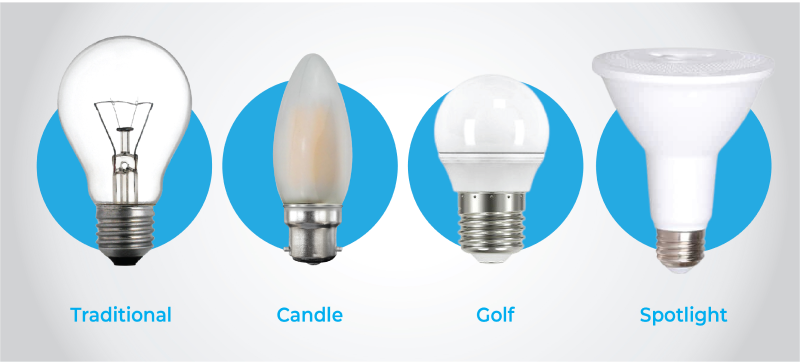
- Traditional – The A-series bulbs are the standard bulbs you see in your home. They are perfect for ceiling lights, vanity lights, kitchen lights, closet lights, bedroom lights, and lamps. They are versatile and perfect for any type of application.
- Candle – They resemble a candle flame. Candle bulbs are often seen in chandeliers, pendant lights, wall lights, night lights, and other decorative home applications. During Christmas, you’ll see some Christmas lights with this bulb shape.
- Golf – As the name inclines, this bulb is spherical. You can see them in various applications like foyer lights, chandeliers, kitchen lights, etc. The most common golf bulb is the E27 which you see in makeup vanities and in the bathroom.
- Spotlight – These bulbs produce a concentrated beam of light highlighting a narrow spot or creating a wide flood beam pattern. This shape is perfect for directional lighting and is available in a variety of colours. Spotlights can be used in various applications like track lights, downlights, recessed lights, display lights, and deck lights. Since they operate at a low voltage, many spotlights are perfect outdoors. You can use them as driveway lighting, gazebo lighting, pathway lighting, and paver lighting.
What are Lumens?
When people had no other option except incandescent and halogen bulbs, wattage was the basis for the brightness of the lights. The more energy you give, the brighter the output, which leads to more heat production and wasted energy. Fortunately, LED lights were made as a solution to this problem. Now, the brightness of the light is not based on the amount of energy it consumes. With LED lights, wattage just plays a minor role, and the lead star is the lumens.
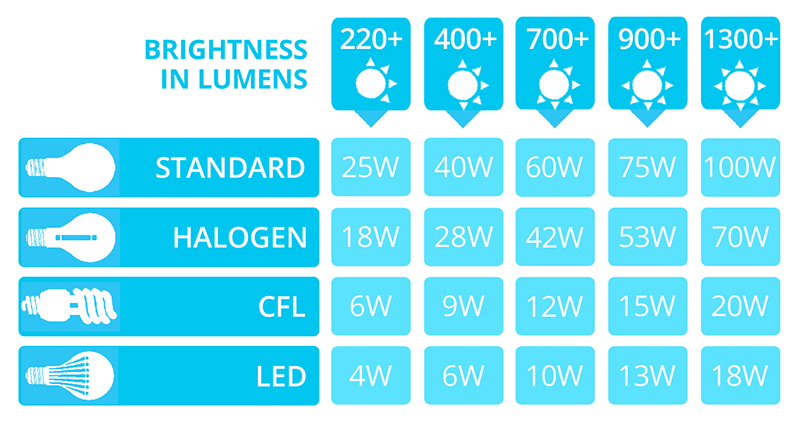
What are lumens? Lumens are the measurement of visible light emitted from a source. So, with LED lights, the number one feature you need to check is the lumens. The higher the lumens, the brighter the lights. Yes, wattage is still essential, so you know how much you need to pay to power the lights, but lumens are enough to determine how bright your lights will be. From this, you’ll see that LED lights are far better and more energy-efficient than incandescent and halogen bulbs.
What do you need to know about colour temperature?
When buying LED lights, you might have come across options of LED colour. What does it mean? It’s the bulb’s colour temperature, whether it’s the warmer end of the spectrum or the cooler end of the spectrum. There is no right or wrong when choosing a colour temperature because it’s down to your personal taste. It’s important because it makes your home feel like a home and not like a clinic. The colour temperature is perfect for enhancing the mood and vibe of your rooms.
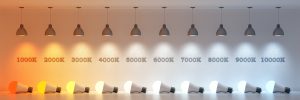
If you want to have a cosy and homier atmosphere, better go with a warm white light (2000K – 4000K) which is the closest colour to that given by old-style incandescent bulbs. If you have a home office and need good lighting, you need a cool white light (6000K – 7000K). Another option that you can try is a natural white light (4000K – 6000K). This is similar to a cloudless sunny day and is also referred to as Daylight. Although, some people, especially those who prefer a cosier ambience, still find this colour temperature too bright.
Which bulb goes to which room?
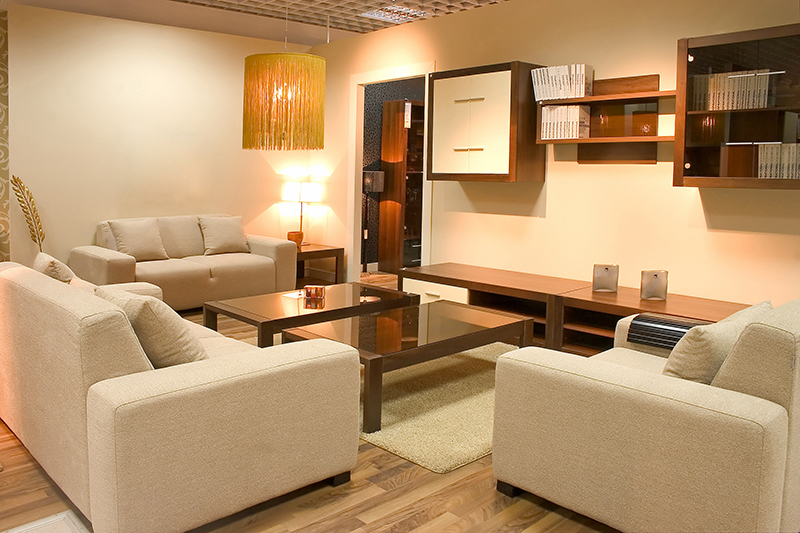
After learning about the different colour temperatures, it’s time to know how to apply them. You don’t have to use just one colour for your entire home. You need to customise it based on the function of the rooms and the activities you do in them. If you miss-match this, you might end up having trouble using that space instead of having a well-lit and functional room. Imagine having a warm white light in your study area or having a cool white LED light for the bedroom. Instead of concentrating on your studies, you’ll feel super cosy and relaxed. On the other hand, your mind won’t relax if you’re getting ready for bed under a bright light.
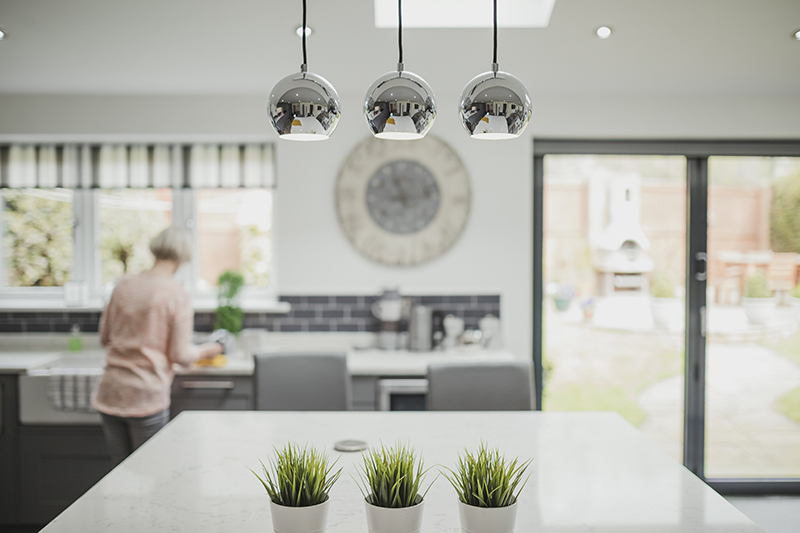
Here’s a tip, for rooms of relaxation, use soft, warm white lights. They work well in the bedroom, living room, and dining room. Alternatively, for spaces that require you to do many tasks, use natural white light or cool white light. They go well in the kitchen or the study room.
Now that you know how to choose your LED lights, it’s time to check them out on our website!


